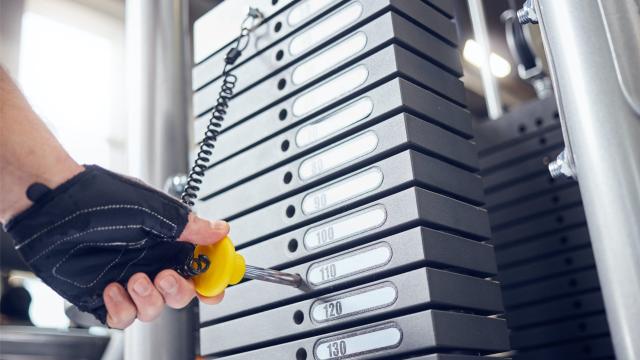Why can you do 100 kg on the leg press at your usual gym, but only 80 if you go to a different location across town? You didn’t suddenly get weaker, and contrary to a popular myth, it’s not because one gym is lying to flatter you. Machines are just different.
Machine design matters
Let’s take leg press as an example, since almost every gym has one. This is the machine where you have some kind of seat, and some kind of platform for your feet. You push with your legs to either move the platform while the seat stays in place, or vice versa.
There are many different ways to build this type of machine. Some are vertical, with your feet directly above your hips. Some are horizontal. Some have the seat sliding up a ramp, pulling on a stack of weights as it goes. Each of these are a completely different machine, and it should be no surprise that the one with an incline and a weight stack is calibrated differently than the one where your feet are above you and you load weight plates onto it.
Think back to elementary school physics for a minute. When a machine has a lever arm, like a shoulder press machine, the length of the arm changes the amount of mechanical advantage (or disadvantage) you have in lifting the weight. The number of pulleys and cables in a cable machine can also change how much force it takes to move the weight stack. If weights are moving on an angled track, the steepness of the angle will affect how easy the weights are to move.
And even when you’re comparing two machines that appear to be identical, there can be subtle differences. One might be better lubricated than the other, letting its parts slide more easily. They might also not be quite the same; maybe the manufacturer moved a pulley to a different spot in between the 2018 and the 2019 model. You get the idea.
Machines are not equivalent to free weights either, by the way. Just because you can leg press X pounds doesn’t mean you can load a barbell on your back and squat the same amount.
So are the numbers meaningless?
Not at all. The numbers just matter on that machine. If one of the plates in the stack says 50, and the next plate down says 55, then you know that if you can rep the 55, you’re stronger than when you could only do reps with the pin at 50.
When you visit a new gym, go by feel. If you could do eight reps on the 55 pin at your old gym, find a weight where you can do eight reps on the new machine. It doesn’t matter what number is on that weight, or how much the weight stack would weigh if you could pull it out of the machine and put it on a scale.
Think of it like in-game currency: You wouldn’t waste time googling how many Monopoly dollars equal how many Robux, because there’s no reason for the two to ever match up to each other in any meaningful way. Each is useful in its own world, and nowhere else.
So yes, absolutely write those numbers down in your training journal. They’ll help you track your progress. But don’t expect them to be the same on another machine across town.

Leave a Reply
You must be logged in to post a comment.